Since its launch date, 25th December 2021, the James Webb Space Telescope has continued to be in the news. The entire credit goes to the back-to-back discoveries it has been making. On 24th of January 2022, the mission team did fire the thrusters, inserting the telescope at the second Lagrange point – into the orbit around the Sun. Since then, the telescope has been doing its best to discover the unknowns in space.
Moving on to 2023, let’s look at the various findings of the James Webb Space Telescope.
The Discovery Of Barred Galaxies
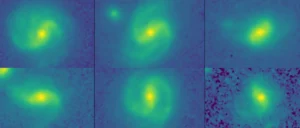
The James Webb Space Telescope’s series of discoveries for 2023 started with the release of images – showcasing barred galaxies. These get their name from the stellar bars – complete bands of stars stretching from the galaxy’s center into the outer disks.
Out of all the six, two were 11 million years of age when the universe was only 3.4 million years old. They are the oldest in the lot, with the other 4 belonging to a time that dates back to 8 billion years ago.
Stellar bars are essential in galaxies’ evolution, as they transport gas from the outer regions to the center. They then convert the gas into a new star, fueling the growth of black holes found in the center. The Discovery of barred galaxies so ancient has raised new questions about the universe’s evolution.
Discovery Of Metal-rich Galaxies In Early Universe
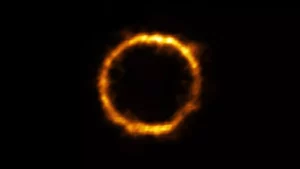
According to Bo Peng – the study’s lead author, the James Webb Space Telescope changes how one views space and the formation of galaxies and stars. On observing the target SPT0418-47 – one of the largest dusty star-forming galaxies in the early universe, astronomers found a blob of light near its outer edge.
The latter (SPT0418-SE) is a companion galaxy that was previously overshadowed. The team was astonished to find how the SPT0418-SE, irrespective of its young age, had already hosted several generations of stars.
Also, both galaxies portrayed a mature metallicity, comprising considerable amounts of oxygen, nitrogen, and carbon. Finally, the research team agreed that the star-forming process of these galaxies must have started at an early age and had been quite efficient, owing to the great quantity of nitrogen found.
Dust Storm On A Super-Jupiter Planet – VHS 1256 b
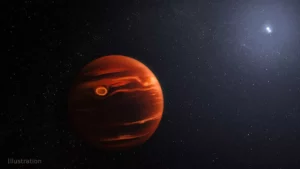
Owing to the distance of VHS 1256 b from the stars, its lights are not mixed with those from the stars. Moving on to the discovery made by the James Webb Space Telescope – located clouds made from tiny silicate particles smaller than the grains of sand on the planet. On measuring the planet’s temperature, the team also found that it was quite hot, soaring up to 1,500 degrees Fahrenheit.
According to the researchers, the planet is quite young, and the dust storm will not stay here longer. Eventually, it will subside as the planet grows old.
A complete suite of Infrared cameras of the James Webb Space Telescope was of great help here. The infrared light spectrum enabled the team to get accurate measurements of the light coming off the planet without external interference.
The GJ 1214b – A Mysterious Planet Which Is Also Weirdly Shiny
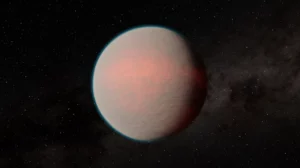
The GJ 1214b is bigger than Earth but comparatively small in size than the other gas or ice giants in the solar system. Using the James Webb Space Telescope, researchers wanted to make an observation about the heat emitting from the planet. Where they found the planet to orbit its star once in 38 hours.
The temperature on the dayside was 530 degrees Fahrenheit. A lot hotter for any life to exist. The team summarised this planet as highly shiny, which helped it reflect off about half of the light it was getting from the star instead of absorbing it.
The telescope found the atmosphere of the planet not to be hydrogen-rich. But, the findings made sure that methane and water vapor were present. Further, studies are under planning to understand the mysteries behind the planet being so shiny.
A Gargantuan Geyser On Saturn’s Moon
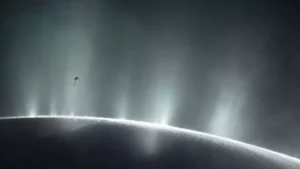
The latest James Webb Space Telescope revelation has caught Enceladus, Saturn’s icy moon, spraying off a ‘huge plume’ of water vapor far into space. Scientists think that this plume might contain chemical ingredients required for life.
In 2005, NASA’s Cassini spacecraft first observed icy particles shooting through the lunar cracks of Enceladus. Also, NASA states that such is the blast’s power that its materials form one of the rings of Saturn.
Moving on with the analysis of the huge jets by the James Webb Space Telescope, it contains ammonia, carbon dioxide, and methane as the chemical building blocks necessary to develop life.
To get a further detailed understanding of the phenomenon, NASA has plans to discover signs of life on Enceladus. The proposed “Enceladus Orbilander” will take around the moon for six months and collect samples from the plumes. Then it will land on the surface and analyze the land area.
So that is all about the major revelations by the James Webb Space Telescope in 2023. Let’s wait and take a look at how the future unrolls.



